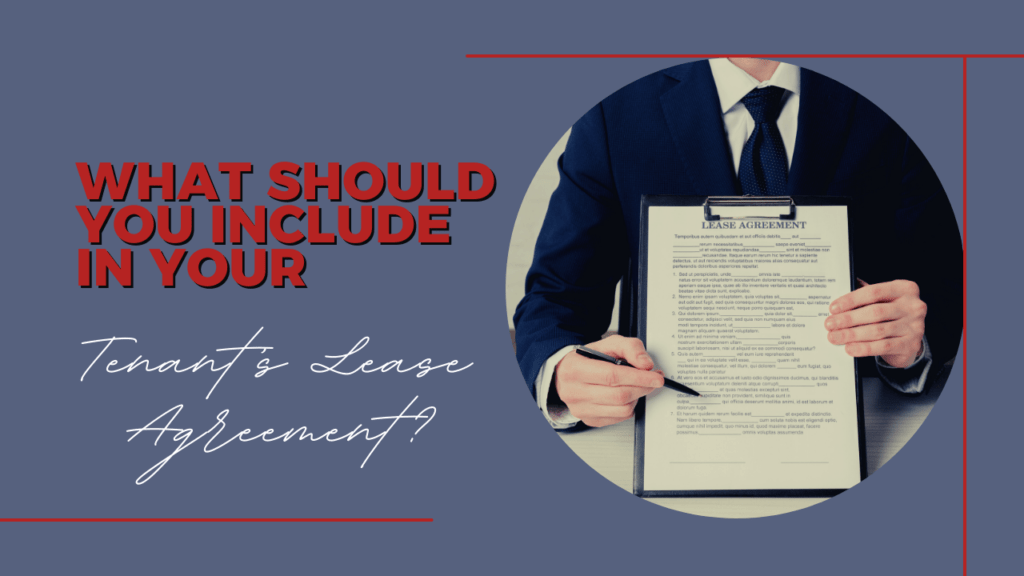Once you’ve approved qualified tenants for your rental property, it’s time to collect the move-in funds and sign the lease agreement. What kind of information do you need to include in your lease? Where do you even start? We’ve put together a roadmap of what your lease agreement needs to reflect. Always make sure your lease agreement is reviewed by a Pleasanton property manager or an expert in California’s landlord and tenant law. Many owners will simply download a sample lease from an online website. This is not recommended. Your lease needs to be specific to California and reflect all its laws and requirements. If you’re not using a lease that can be lawfully enforced in the courts, you’re putting yourself at risk and jeopardizing your ability to hold tenants accountable if rent isn’t paid, damage is found, or the lease is violated. Don’t download any lease you find online. Make sure your lease agreement has been reviewed and approved by an attorney or a Pleasanton property manager. It’s the only way to ensure you’ve included all the language that’s legally necessary.
Names and Contact Information for All Parties
Identify who is renting the property out and who the tenants and occupants are. There should be a full name and contact information associated with every tenant 18 years of age or older. Children should be listed as occupants as well. The landlord’s name and address or the information associated with their property manager should also be included. Make sure the lease establishes that only the listed tenants are permitted to live in the property. You don’t want to invite unauthorized residents to move in when they have not been screened.
Lease Term and Renewal Options
A rental agreement can be for any flexible period of time, but a fixed-term lease will generally be for a period of one year or more. This should be spelled out in the lease. You’ll want a start date and an end date, and you’ll also want to stipulate what happens at the end of the lease term and how a renewal or a notice to vacate needs to be handled.
Security Deposit and Rent Collection Policy
Every good lease agreement will be explicit about rent. You must include:
- How much rent is due.
- When the rent is due.
- How the rent should be paid.
- Whether there are any grace periods.
- What the consequences will be for late payment.
Include the amount of the security deposit that was collected and provide specific instructions on what the tenants will have to do at the end of the lease term to receive a full refund of their security deposit.
Instructions for Reporting Maintenance
Hold tenants accountable for reporting repair needs immediately. You don’t want those deferred and unreported maintenance items to grow more complicated and expensive over time. A clear explanation of how maintenance should be handled will eliminate any confusion with your tenants about what they’re expected to be doing and what they can expect you to take care of. Your lease should explain how to report maintenance and what constitutes an emergency. You should also be clear that residents will be expected to pay for any damage they or their guests cause.
Rules and Policies
The lease should also include a list of rules and regulations. Tenants need specific instructions about what is permitted and what is not permitted while they’re living in your property. Make sure to reference in your lease agreement:
- Pet policy
- Smoking policy
- Prohibition against criminal activity
- Circumstances under which a landlord can enter the property
- Policy on rental increases
- How long guests can stay overnight
If your rental property is in an HOA, you’ll want to make sure your tenants understand the Association’s rules and regulations. You can include them as an addendum to the lease. Since The Tenant Protection Act of 2019 has gone into effect, your lease must state whether your property is subject to statewide rent control laws or exempt from them. Be sure there’s language in your lease to reflect that.
Lease Disclosures Specific to California

California requires a number of disclosures that landlords must make to tenants in the lease agreement. You’ll need to disclose all toxic substances such as mold, asbestos, methamphetamine contamination, and lead paint. You’re also required to report any registered sex offenders in the area, pursuant to Megan’s Law. Other disclosures specific to California that must be in your lease agreement include:
- Gas and electric disclosures, if your rental property isn’t individually metered
- Pest control disclosures
- Whether there was a death in the home
- Whether rent control pertains to your property
This is by no means an exhaustive list of what you should include in a lease agreement. It’s a good starting point, and it’s an overview of what absolutely must be included in any lease you sign with your tenants. Remember to document the condition of your property with a complete move-in inspection report. We make sure your lease agreement is both legally compliant and legally enforceable. If you’re struggling to get just the right language into your lease, please contact us at Advantage Property Management Services. We’re your resource for professional Pleasanton property management.






